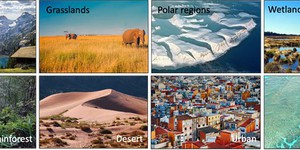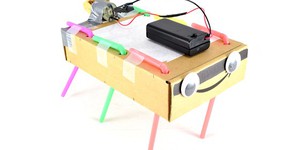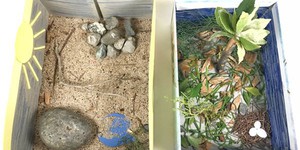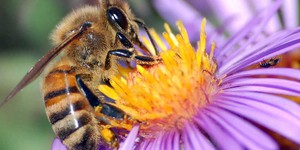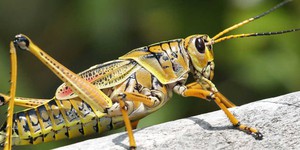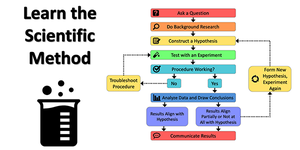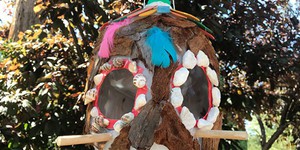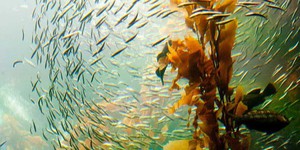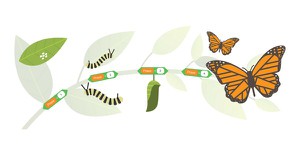Zoology Lesson Plans (16 results)
Animals have developed an amazing variety of body plans, behaviors, and strategies in order to succeed in the struggle for survival. Explore topics ranging from regeneration, camouflage, animal migration, how to attract hummingbirds, and more.
|
Select a resource
Sort by
|
Lesson Plan
Grade: Kindergarten
24 reviews
In this lesson, students play a game. Each classroom corner represents a habitat. After selecting an animal card, students have to move to the matching habitat while acting out the animal displayed on their card. By explaining why they selected a certain habitat, students realize that a habitat is a place that helps an animal survive.
Read more
NGSS Performance Expectations:
Featured
Lesson Plan
Grade: 6th-8th
7 reviews
Junkbots are easy-to-build robots that you can make using a simple circuit and some recyclable materials. In this lesson, your students will learn about engineering design as they compete to build the fastest robot. No previous robotics experience is required!
Read more
NGSS Performance Expectations:
Lesson Plan
Grade: Kindergarten
23 reviews
At some point, many children wish for a pet animal to play with and care for. But what does it take to keep an animal alive and healthy? In this engaging lesson plan, children will act out adopting a pet and shopping for items based on its needs. As they bring their items together, they will notice that every animal needs food, water, shelter, and air to survive.
Read more
NGSS Performance Expectations:
New
Lesson Plan
Grade: 6th-12th
Create a two-part system for filtering greywater. Teams will focus on communication and systems engineering as they build separate components to filter solid and liquid waste and then combine them into one device.
Learning Objectives
Students will:
Consider the potential effects of drought and how greywater could be part of the solution.
Design a system for filtering out solid waste or liquid waste.
Consider effective communication strategies with their team.
Collaborate on their design…
Read more
Lesson Plan
Grade: Kindergarten-2nd
5 reviews
Get creative with your students in this hands-on lesson plan! Students will use mostly natural materials to build a shoebox habitat that mimics a real-life habitat for an animal of their choice. As they present their miniature habitats to each other, students realize that not all habitats are suitable for all animals. Each animal species needs the resources of a specific habitat to survive.
Read more
NGSS Performance Expectations:
Lesson Plan
Grade: 3rd-7th
5 reviews
In this activity, students learn about plant reproduction and use real data to construct explanations about which flowers are the most attractive to different pollinators.
Read more
NGSS Performance Expectations:
Lesson Plan
Grade: 2nd-5th
4 reviews
There are thousands of species of insects in our world, and each are adapted to survive in their habitat. In this activity, students will learn what an insect is and what some of their adaptations are. Then they will put their knowledge into play by "creating" an insect that is adapted to live in their assigned environment.
Read more
Video Lesson
Grade: 3rd-8th
7 reviews
This lesson will introduce students to the scientific method using a fun, hands-on activity about the role of animal camouflage in evolution. During the activity, students will practice each step of the scientific method including doing background research, making a hypothesis, conducting an experiment, analyzing data, and drawing conclusions. By going through this process, students will also learn how camouflage helps animals survive.
Read more
NGSS Performance Expectations:
Lesson Plan
Grade: Kindergarten
2 reviews
In this lesson, each student will create a bird feeder from recycled, bird-safe materials. While designing their own bird feeders, students will discuss what basic needs an animal has and how they can meet these needs with the structure they build.
Read more
NGSS Performance Expectations:
Lesson Plan
Grade: 5th-9th
2 reviews
Could you describe the kelp forest food web as a system? Your students will design and use a simple model to test cause and effect relationships or interactions concerning the functioning of a marine food web, ranking their hypothetical ecosystems according to their stability when faced with a natural or man-made disturbance.
Read more
NGSS Performance Expectations:
Lesson Plan
Grade: Kindergarten-3rd
2 reviews
Computational thinking is a problem-solving process that is used in everyday life as well as computer programs. In this lesson, students apply their computational thinking skills to explore the life cycle of a butterfly. They'll create an algorithm, or set of instructions, to model the life cycle of a butterfly. They will write this algorithm using conditionals and then program it on a computer.
Learning Objectives
Students will:
Analyze the life cycle of a butterfly.
Develop an algorithm…
Read more
Lesson Plan
Grade: 6th-12th
Scientists are concerned that climate change could cause the spread of mosquito populations that carry diseases like malaria, West Nile virus, Zika virus, and dengue fever. In this lesson plan, your students will access real-world data on mosquitoes at different locations throughout the United States, and examine the effects of temperature on mosquito populations.
Remote learning adaptation: This lesson plan can be conducted remotely. Students can work independently on the Explore section of…
Read more
NGSS Performance Expectations:
|
Explore Our Science Videos
DIY Mini Drone Part 6: Motion Control
Science Buddies: Hand Warmer Chemistry
Write and Read Braille – STEM activity

